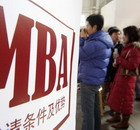Restructuring
Coastal industries upgraded while moving to inland
(Xinhua)
Updated: 2009-12-12 10:56
The ceramic industry has been notorious for high pollution and energy consumption, but that reputation is changing in inland China.
In Fengcheng city, east China's Jiangxi province, the ceramic industrial park has attracted leading manufacturers from the coastal areas of Guangdong, Shanghai and Zhejiang.
Here they have no chimneys or waste water discharges. Rain water is collected for fish-farming in an artificial lake.
"We combine industrial upgrading with the location transfer," said Shi Shaogang, deputy manager of Jiangxi H&M Ceramics Co Ltd, under the Wonderful Ceramics Co Ltd, based in Guangdong province.
"When we set up new factories in Jiangxi, we stopped production of two others with old technologies in Guangdong.
|
||||
"Without advanced technologies or a sense of environmental protection, we cannot meet the demands of the local government, nor can we survive in the market."
China's economic growth has been largely driven by east coast. This is mainly due to the ease of shipping export goods manufactured in the Pearl River and Yangtze River deltas out of ports in coastal cities.
But due to the rising costs of land, resources, energy and labor, many manufacturing, packaging, and furniture companies are moving inland.
In the last seven years, thanks to the improved infrastructure and investment environment, the western regions have attracted almost 200,000 companies from the highly-developed east, with investment exceeding 1.5 trillion yuan, said Professor Chang Xiuze, of the Institute of Macroeconomics under the National Development and Reform Commission.
"Industries are moving from developed countries to developing countries, and inland from China's eastern region. The trend is likely to continue for the foreseeable future," he said.
The strong wave of industrial upgrading was a new driving force for inland economic development, he said.
The inland is not mimicking east China's growth model. Rather, local governments were making more scientific plans and stricter policies to encourage technological innovation, attract talent, and improve financial services.
By inviting policy banks, including the China Development Bank, Fengxin County, in Jiangxi province, can provide 78 percent of the loans that companies need. Many companies from Zhejiang, Fujian and Hong Kong have been lured to Fengxin to maintain their profits and expand.
Another success story is Wuwei County, Anhui province, which produces almost 80 percent of China's supply of feather and down products. The county makes more than 1 billion yuan from raising poultry and processing feathers every year.
"The competitiveness of Wuwei originates from industrial transformation, and more importantly, from innovation," said Zhou Yi, the county's deputy head.
The government encourages private companies to invite more talent. It rewards each company that attracts an employee with doctorate 20,000 yuan, and 10,000 yuan for an employee with masters degree, he said.
"Last year, the county's efforts to draw talent and technologies led to more than 60 new products, with 32 leading their fields nationwide."













